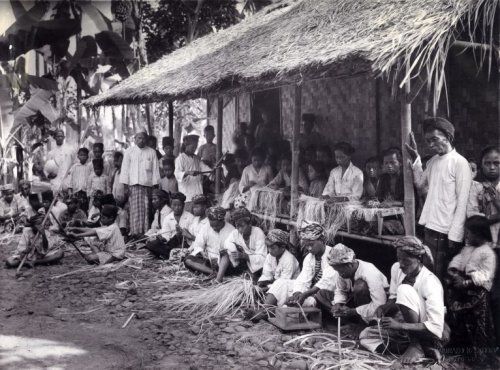
Photo: Wijnand Kerkhoff/Vintage
Woven hats from Java were once very popular in the world, both made from bamboo and pandanus. Woven hats were one of the significant export commodities of the Dutch East Indies. One of its production centers was in Tangerang, a small town near Batavia.
When rice plants were not asking too much attention, Tangerang residents flock to weave hats. The number was enormous, 200-300 thousand people were involved in this production process, men, women, and even children.
According to a record, the skill of weaving hats was brought by the Chinese around 1850. Then it developed into a people's industry whose production involved all family members.
The woven hats from Tangerang were very popular with European ladies. That's why many travelers from Europe, especially from France, stopped by Tangerang when they visited Batavia. Many of the officers and crew of the French steamships bought them in bulk for resale in Europe. The price was cheap, and the quality was good.
These traders made huge profits from exporting woven hats, the price in Europe could be many times over. While the Tangerang woven hats were made without a brand, so the price received by the craftsmen was very low.
Seeing its extraordinary potential as an export commodity, the Dutch East Indies government then promoted Tangerang woven hats to the world. According to Commerce Reports Vol. 1, the export of woven hats in 1929 reached 25.6 million hats. This industry was hit by the Great Depression which suppressed the purchasing power of the world community. Then it was hit again during the Japanese occupation in 1942-1945.
The photo above shows the process of making woven hats in 1937, which was probably located in Tangerang. Dozens of people in a big family diligently weaving hats.